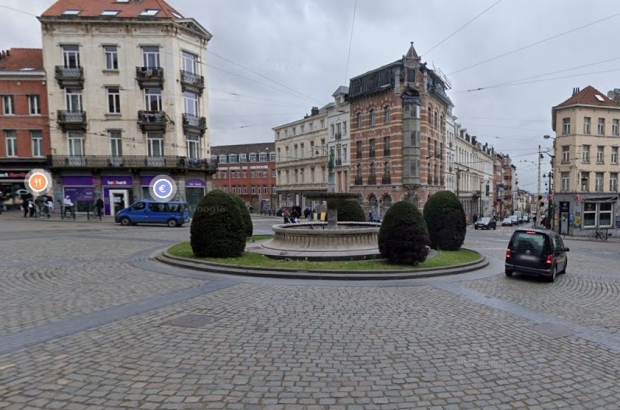- Daily & Weekly newsletters
- Buy & download The Bulletin
- Comment on our articles
Cyclists call for action after serious accidents in Saint-Gilles and Forest
Urgent measures are needed to make two "death junctions" in Brussels safer for cyclists, campaign groups including Heroes for Zero and the collectives 1190/0 and 1060/0 have said.
Their calls come following accidents that left two cyclists in a critical condition in December - at La Barrière roundabout in Saint-Gilles and Forest’s Place du Rochefort.
The Barrière de Saint-Gilles features a charming "water carrier" sculpture topping what was once a functioning fountain - but it is also a veritable obstacle course of seven roads intersecting with tramlines and bus routes.
Moreover, its cobblestones make crossing there exceptionally dangerous in rainy or icy conditions. There are no signposts giving right of way and, as a cyclist, it seems more like a case of point and shoot.
The Place du Rochefort, while not such a nightmare, is also exceptionally busy at rush hours, bringing buses, trams, cyclists and pedestrians together.
The two communes have called for change since 2021, but thus far there has been little progress other than endless meetings and pretty plans of an "ideal" Avenue du Parc with playgrounds and more space for pedestrians and cyclists.
Now there is concern that any sensible suggestions – notably designated cycle lanes and re-directed tram routes around La Barrière – will be shelved or delayed further given the change in government of the communes.
“We have been waiting for a safe circulation plan for so long. Urgent long-term interventions on the entire Avenue de Parc and the Barrière are essential,” Heroes for Zero said at a recent demonstration on Place du Rochefort in honour of victims Roland (58) and Marieke (46) where some 100 cyclists cycled back and forth between the two hotspots.”
“We already know that the redevelopment of the Barrière and Avenue de Parc is on the agenda,” Heroes for Zero’s Benjamin François said. “But when will these works start? And what safety interventions will be made in the meantime?”
Much noise was made in the press and also by the communes themselves that it was a miracle Roland, hit on the Barrière by an SUV and dragged 15 metres with his bicycle underneath, survived the crash.
“I’m amazed to be alive,” Roland told ‘La Dernière Heure’. “The [SUV] driver didn’t see me and even accelerated. I didn’t understand. I’m under the car, my head is sticking out of the front bumper. My bike’s stuck too.”
But Heroes for Zero’s Harold Haboushka added: "It takes more than counting on miracles to have a sound traffic policy."
Anyone witness to the La Barrière accident and/or the resulting mass of police cars, ambulances, screaming sirens and flashing lights could not help but be shocked and scared: “The intensity of the reactions reflects the deep sense of insecurity felt by cyclists and other vulnerable road users in Brussels,” Haboushka added.
“Just because there were no fatalities does not mean that what happened was not serious,” said the coordinator of the group aiming to make ‘Vision Zero’ – the Brussels region’s road safety plan that aims, by 2030, to have zero deaths and zero serious injuries on Brussels roads – a reality.
Forest resident and fellow group member Benjamin François agrees: “To cycle in Brussels today you need to be a warrior. That should not be the case.”
Sociologists and urban planners such as Yves Hanin, professor of urbanism and territorial development at UCLouvain, point to growing tensions between cyclists and motorists.
Car drivers feel that they are being "downgraded" because they need to share public space with bus lanes, cycle lanes and one-way streets except for cyclists, he said. “The motorist feels he is being taken hostage. But… we need to understand that things are changing and we need to support that change.”
As it stands, Belgium’s road safety institute Vias said that almost half of all cyclists injured in the country are injured as a result of contact with a motor vehicle.


















